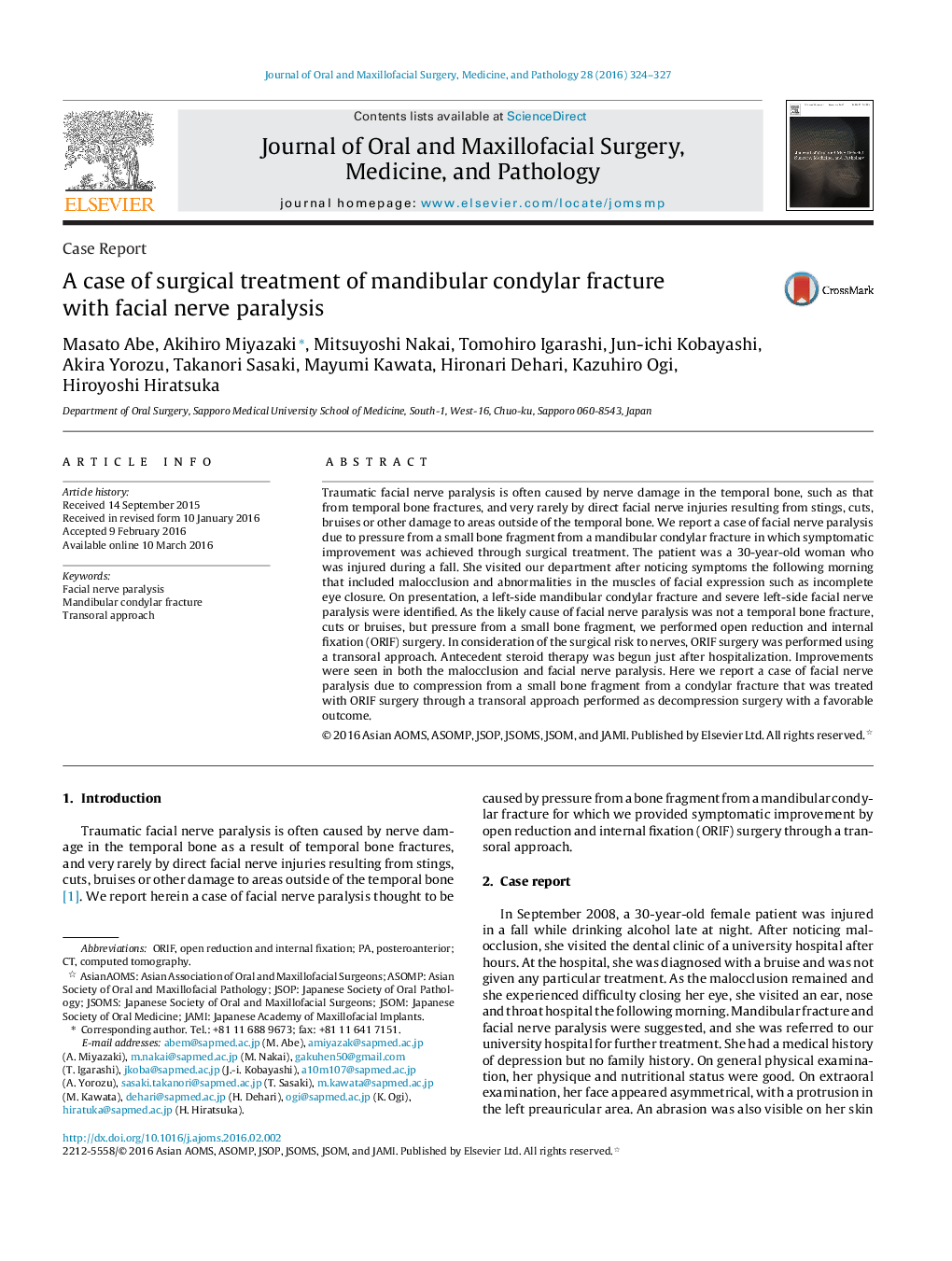| Article ID | Journal | Published Year | Pages | File Type |
|---|---|---|---|---|
| 3160036 | Journal of Oral and Maxillofacial Surgery, Medicine, and Pathology | 2016 | 4 Pages |
Traumatic facial nerve paralysis is often caused by nerve damage in the temporal bone, such as that from temporal bone fractures, and very rarely by direct facial nerve injuries resulting from stings, cuts, bruises or other damage to areas outside of the temporal bone. We report a case of facial nerve paralysis due to pressure from a small bone fragment from a mandibular condylar fracture in which symptomatic improvement was achieved through surgical treatment. The patient was a 30-year-old woman who was injured during a fall. She visited our department after noticing symptoms the following morning that included malocclusion and abnormalities in the muscles of facial expression such as incomplete eye closure. On presentation, a left-side mandibular condylar fracture and severe left-side facial nerve paralysis were identified. As the likely cause of facial nerve paralysis was not a temporal bone fracture, cuts or bruises, but pressure from a small bone fragment, we performed open reduction and internal fixation (ORIF) surgery. In consideration of the surgical risk to nerves, ORIF surgery was performed using a transoral approach. Antecedent steroid therapy was begun just after hospitalization. Improvements were seen in both the malocclusion and facial nerve paralysis. Here we report a case of facial nerve paralysis due to compression from a small bone fragment from a condylar fracture that was treated with ORIF surgery through a transoral approach performed as decompression surgery with a favorable outcome.
